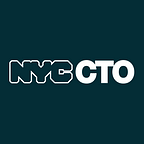COVID-19 Response: Bringing Broadband Connectivity to Older New Yorkers
In March 2020, the novel coronavirus took hold of the world and changed life as we knew it. The change was sudden. In a New York minute, we were confined to our homes and living remotely — working, learning, shopping, and connecting with loved ones through a screen.
For those of us with internet service and a computer or smartphone, this change, while abrupt, was doable. However, the 1.5 million New Yorkers who lack access to broadband at home were left in the void. They were disconnected at a time when the internet would become more critical than ever before.
Earlier this year, Mayor de Blasio released the New York City Internet Master Plan, a comprehensive road map to closing the digital divide through enhanced infrastructure, affordability, and inclusion. The Master Plan recognizes that the internet may be as essential to New York City in the 21st century as electricity was in the 20th century. Broadband internet is a gateway to essential services such as education, food delivery, and healthcare, which is why we simply cannot tolerate digital redlining. In the Internet Age, advancing people’s digital rights must be a priority. Reversing the effects of years of discriminatory practices won’t happen overnight, but we are going to move as fast as we can, because no New Yorker should have to go without broadband that is reliable, safe, and affordable.
The new coronavirus and COVID-19, the disease that it causes, have made the urgency of our mission all the more apparent. While many of us have long believed that ubiquitous connectivity is a moral imperative, COVID-19 has made clear to all that broadband is a public health necessity, too. For people to access essential services online, they must first be online. It’s just that simple.
The most vulnerable New Yorkers need our help now, and we know that Internet connectivity is foundational in delivering what they need. In partnership with the New York City Housing Authority (NYCHA) and the New York City Department of Aging, we introduced the Connected NYCHA: Older Adults program. This month, 10,000 internet-connected tablets are being delivered to NYCHA residents who are aged 62 and older and living alone. The City recognizes that older New Yorkers who are low-income are more likely to experience health complications, have a greater need for resources, and are less likely to have affordable internet connectivity. In addition to helping older adults access information and services like telehealth, these new tablets will help them more fully participate in key civic duties, such as the U.S. Census.
I’m glad we can say that for 10,000 older New Yorkers living in public housing — who are among the most vulnerable during the COVID-19 pandemic — their wait is over. The internet is here.
While the Connected NYCHA: Older Adults program is just one step of the many needed to close the digital divide, it is a potentially transformative one for the thousands of New Yorkers who benefit directly. And during COVID-19, the need is especially clear and urgent. As we face this crisis, the City of New York is more committed than ever to achieving universal broadband, and we will continue to work toward that goal. In doing so, we help make people and communities stronger, safer, healthier, and more connected.
John Paul Farmer, New York City Chief Technology Officer, https://twitter.com/johnpaulfarmer
